The tunnel boring machines continue to churn their way through subterranean London on the £14.8 billion Crossrail project, but already Transport for London is thinking about the big infrastructure projects of the future.
Like its older brother, Crossrail 2 will create a high frequency, high capacity rail line, enabling shorter journey times between southwest and northeast London.
It is designed to address capacity constraints that will become ever more critical in the future, with new connections across the capital supporting the UK’s single largest area of employment. New opportunities could be provided for thousands of new jobs. And the relatively forgotten areas of outer London and the Upper Lea Valley would not be left behind - Crossrail 2 could help support up to 200,000 sustainable new homes.
From a railway perspective, something has to be done about the increasingly congested Waterloo. A ten-car railway is being created with more carriages on suburban lines out to the suburbs, but platforms can only be extended so far, even if the concept of double-deck trains is now being talked about again for the South West Main Line.
The potential additional capacity of Crossrail 2 could move up to 90,000 people in the morning peak, relieving the bottleneck at Waterloo and at other parts of the rail network around London (including some of the suburban services in and out of King’s Cross) by diverting services into a new tunnel under London.
“It’s bigger than Crossrail 1,” says TfL Managing Director Crossrail 2 Michèle Dix, explaining the vision for the scheme. “We are planning for a continued concentration of jobs in the Central Activities Zone, but spread over a larger area.”
While the pattern of commuting into the capital is set to continue, it will do so on a grander scale. Says Dix: “The London employment model is dependent on a dense rail network which focuses on central London. Investments under way will deal with today’s growth, but will not address the challenges of 2030 and beyond.”
Large schemes to deal with these pressures are nothing new, of course, but they have not been a constant feature of London’s transport infrastructure development. After the Victoria Line fully opened in 1971, it wasn’t until the Jubilee Line Extension (JLE) began in the 1990s that the next major infrastructure investment or network development took place.
And after the JLE fully opened in 2000, TfL’s focus was on station upgrades and replacement fleets for much of the next decade, until the go-ahead was finally given for Crossrail’s route from Shenfield and Abbey Wood in the east to Heathrow and Maidenhead (and later Reading) to the west.
But as well as Crossrail, building the East London Line extension (north of Shoreditch and south of New Cross) on new and existing railway alignments has morphed something of a backwater of the Underground network into a more useful metro route.
Meanwhile, Thameslink has grown into a massive redevelopment of London Bridge station and an unclogging of a key central London rail artery. And relatively smaller schemes such as the Croxley Rail Link and even the Northern Line Extension to Battersea are under way.
But all will be dwarfed by Crossrail 2. Developing ideas first germinated over 40 years ago, a revised case is now being argued for a new underground railway under London - along the same principles as Crossrail 1 and making good use of existing Network Rail infrastructure.
The pressure on London’s infrastructure and the need to create sustainable economic growth could not be any greater. London’s population is expected to reach 10 million by 2030 - it could be said that Crossrail 2 is a project whose time has come.
In 1970, with the Victoria Line then virtually complete and the Fleet Line (which opened at the end of that decade as the Jubilee Line) in the planning, thoughts turned to what the next big project would be.
The 1974 London Rail Study proposed a Tube beginning at Wimbledon in southwest London, either taking over or sharing tracks with District Line Wimbledon-Edgware trains as far as Parsons Green. It would then follow a new underground tunnelled alignment calling at existing stations at Fulham Broadway, Chelsea, Sloane Square and Victoria, at a new station at Millbank, and then Waterloo before crossing the River Thames once more to take in the Aldwych branch of the Piccadilly Line. (At that point, the latter was running merely as a shuttle to and from Holborn mainly for the benefit of commuters and theatre-goers, and it later closed completely in 1994.)
After Holborn, the line would continue to Farringdon, Old Street, Shoreditch Church and then Dalston Junction (then still a part of the British Rail network), before continuing to Hackney Central, Hackney Downs, Hackney Wick, Leyton and Leytonstone. Hereafter, the route would take over or share the Central Line’s Hainault loop branch.
Over the years, many more amendments were proposed. The Central London Rail Study of 1989 suggested deletion of the Millbank station plan and a somewhat different route through central London, including new underground platforms at Piccadilly Circus, Tottenham Court Road, King’s Cross St Pancras and Angel. Essex Road and Homerton were also added, with the route then following the Central Line before terminating at Epping. It was this route that would later be safeguarded in 1991, meaning that no other development could be built preventing its construction.
Throughout the 1990s, the proposals developed further. Under an ‘Express Metro’ plan, main line trains would be accommodated as opposed to smaller Tube trains, and would call at fewer stations.
While Wimbledon would remain the southwestern terminus, three routes were proposed from East Putney onwards on the District Line to Victoria: to Putney Bridge, Parsons Green and Chelsea or King’s Road (as the original safeguarded plan had dicated); to Wandsworth Town and Clapham Junction, and then through Chelsea Harbour and King’s Road; or via Battersea.
Piccadilly Circus was omitted, as was Angel. But Dalston Kingsland was added, with the line then going to Hackney Central, from where it would split. One branch would take in Leytonstone and again take over the Central Line to Epping; another would take the North London Line to Woolwich, which would later become a part of the Docklands Light Railway.
Fast forward to the 2000s, and yet another report - the London East West Rail Study. The Chelsea-Hackney line (as these proposals had become known by then) was being considered both as a standalone project and in conjunction with the Crossrail project (taking a route from Wimbledon to Tottenham Court Road and then to Liverpool Street). Piccadilly Circus remained missing from the plans.
A Chelsea-Hackney Regional Metro would diverge north of King’s Cross (one via Dalston and then the Central Line, and another via Finsbury Park and the disused Northern Heights formation, using the High Barnet branch of the Northern Line). An Express Metro option used the East Coast Main Line for serving points north.
Following the 2007 go-ahead for Crossrail 1, the plans for Chelsea-Hackney were re-examined yet again. Just as the proposals for High Speed 2 were being developed in 2009 by then Transport Secretary Andrew Adonis, TfL was carrying out its own review into the need for a new rail line. It concluded that there was a greater need for a new northeast-southwest rail line, given the current and planned growth across London.
With HS2 currently expected to arrive at Euston in 2026, a boost to the Tube network is anticipated to cater for the increased passenger numbers that HS2 is expected to attract.
That has been a game-changer for Crossrail 2, with TfL ensuring that the plans have developed broadly to the form they take today - championed by the likes of Adonis, London Mayor Boris Johnson and other mayoral hopefuls, and (importantly) with the blessing of Network Rail.
The most detailed case yet was made in the final report from the London First Crossrail 2 Task Force in February 2013.
“The task force’s findings are striking,” writes Baroness Jo Valentine in her foreword to that report.
“Even with the major improvement and expansion programmes that are already planned or under way, overcrowding on the majority of London’s rail and Tube network will increase beyond acceptable levels by the late 2020s. On some parts of the network, demand will be such that the system will be unable to meet demand for large parts of the travelling day. Resilience - to enable the network as a whole to cope with unexpected disruption - will be negligible.”
Given that the proposals for Crossrail 2 have a remarkably long and complicated history (not a single mile of new tunnel has been excavated since the idea was first mooted), it was a relief for supporters when TfL set up a public consultation in May 2013, building on the original concept and proposing two potential options:
A ‘metro’ route starting at Wimbledon would take in central London through to Angel and Alexandra Palace (entirely underground).
A ‘regional’ route would take in Twickenham, Surbiton and Epsom, as well as the Wimbledon-central London-Angel section-Alexandra Palace. An Angel-Cheshunt route was also consulted on, surfacing at Tottenham Hale before continuing on Network Rail tracks.
When the results of the consultation were published in November 2013, it was clear that there was broad approval for the proposal - 96% of respondents to some degree supported the plans, in particular the regional route (84%, against 73% for the less ambitious metro plan). Only Kensington and Chelsea showed any degree of opposition, with 20% of respondents in that borough expressing any disapproval.
Even so, there remains some debate over specific route alignments. It is the precise route and stations in the two boroughs that it was originally proposed to link as the ‘Chelney line’ where further thoughts have been invited.
A second consultation in June 2014 led to some changes to the 2013 proposals. North of the Thames, TfL proposes extending the Alexandra Palace branch to New Southgate, and has discussed moving the junction where the two northern branches split to either Dalston Junction or Hackney Downs (but not both).
While TfL says there were a large number of ideas for further extensions of Crossrail 2, most have not formed part of the most recent consultation - the only one being taken forward is the Alexandra Palace-New Southgate extension, to provide additional interchange opportunities with the Piccadilly Line.
TfL says this would be at no additional cost, as savings can be identified through opportunities to use existing railway land for Crossrail 2 trains. As a result, the Alexandra Palace Crossrail 2 station will become an underground station.
The 2013 consultation proposed two branches separating east of Angel station, with one branch serving Dalston Junction and beyond, and the other serving Hackney Central and beyond.
However, TfL wants to reduce the overall cost of the scheme by around £1bn and minimise the environmental impact during both construction and operation. It has therefore proposed a potential change to the Crossrail 2 route in this area.
Rather than the route splitting at Angel, with one tunnel going via Dalston and the other via Hackney, a single route would continue as far as Stoke Newington or Clapton, at which point the line would split. One branch would head towards Seven Sisters and New Southgate, and the other towards Tottenham Hale and Hertford East.
Put simply, either Dalston or Hackney would be served by Crossrail 2, rather than both as per the 2013 consultation. The corridor that is selected would be served by a higher frequency Crossrail 2 service that would no longer be split north of Angel. In terms of the infrastructure, a new location would be needed for the tunnel portal south of Tottenham Hale (the exact location has yet to be determined), with engineering feasibility work currently being carried out to look at options for the tunnel portal and the impact this would have on the area.
Relocating or removing altogether the Chelsea station has also been mooted, and if it goes altogether this will be the furthest divergence from the 1970 concept. Different alignments will be needed, depending on whether the line goes via King’s Road or Chelsea West.
The 2013 consultation proposed a King’s Road station near the fire station (as currently proposed), improving rail accessibility in an area where current service levels are low compared with other parts of inner London. While there was overall support for the station in the area, TfL concluded that alternative locations further west along King’s Road would provide greater benefits, and so would need to be looked at more closely.
For an alternative Chelsea West station, TfL and NR have identified both the disused Lots Road power station (once used to power the London Underground) and the Imperial Wharf area as possible sites.
On the other hand, the suggestion that a station in this area was not necessary at all could lead to Crossrail 2 bypassing Kensington and Chelsea altogether, if the line were to be routed from Clapham Junction directly to Victoria. However, while overall journey times would be lowered (and another £1bn could be saved), the accessibility and connectivity of the King’s Road area would not be improved.
In many ways the current scheme is even more ambitious than earlier plans - not least in the cost, which has inevitably been inflated over the years.
For starters, there is a longer tunnelled section - the central section is 22.4 miles (36km) in total, compared with Crossrail’s 13 miles (21km) of parallel tunnels (although the latter has 26 miles of tunnels overall).
TfL also assumes that Crossrail 2 should be deliverable for around £27bn - over double that of Crossrail 1. The cost of new trains is included in this figure, while possible risks are also allowed for, as are improvements to the national network that could go ahead regardless of whether Crossrail 2 wins approval.
“It needs an innovative funding approach,” Dix told a conference of rail industry professionals in November. Such an approach is not without precedent - neither Crossrail 1 nor the Northern Line Extension relies solely on the public purse.
An independent report published in November by PricewaterhouseCoopers (PwC) set out some funding and financing options for the scheme, having reported to a steering committee that included TfL, Department for Transport, HM Treasury, Infrastructure UK, and Network Rail representatives. The report looked at funding and financing feasibility for the scheme, setting out a number of options.
The paying back of investment could be achieved through a combination of revenue generated through fares, a continuation of the Business Rate Supplement and the Mayoral Community Infrastructure Levy (CIL) currently being used to fund Crossrail 1, and other measures. Other options could raise funds through existing mechanisms such as retaining the council tax contribution arrangements that were introduced to help fund the 2012 Olympic Games. Property-related developments could also contribute, as could land owners adjacent to the line as part of a mix of contributions.
Overall, PwC estimated that over half of the costs of the scheme could be met by London just by using existing funding mechanisms. Those that would benefit most from the scheme - namely those living and working in and around London - would contribute a fair share towards it.
At £27bn Crossrail 2 is not cheap, although the estimated cost does include a fleet of new trains and additional rail infrastructure works to deliver the full ‘regional’ route option that appears now to be the preference.
While the funding options put forward by PwC are merely indicative, they show a confidence on the part of TfL to drive this scheme forward. A plan is in place, and TfL is working with NR on efficiencies to drive the cost down.
It is not unfeasible that with pressures on the capital’s rail system growing, significant progress will be made on Crossrail 2 in the months and years to come.
- This feature was published in RAIL 767 on February 4 2015

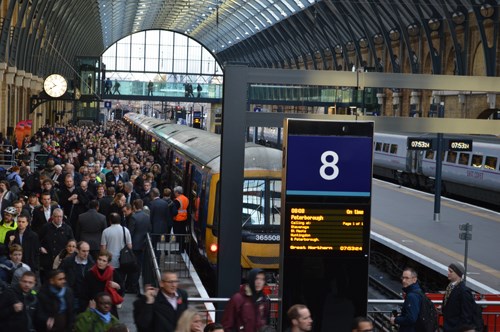
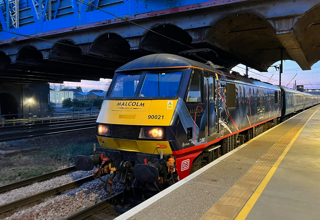
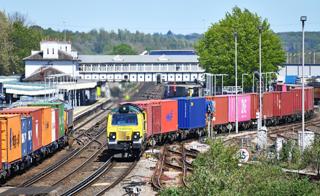
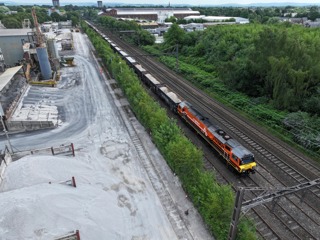
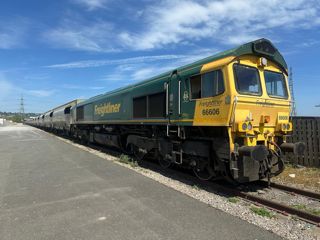
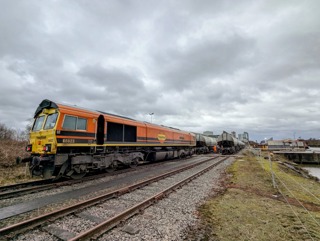










Login to comment
Comments
No comments have been made yet.